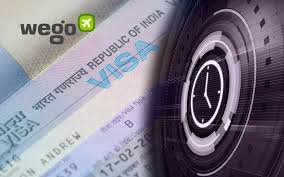In 2024, India has introduced several updates to its visa policies, reflecting its evolving approach to international travel and security. These changes aim to streamline the application process, address emerging global concerns, and enhance the overall travel experience for both tourists and business visitors. Here’s an overview of the key updates and what they mean for travelers.
1. Introduction of E-Visa for More Countries
One of the most significant updates in 2024 is the expansion of the e-visa facility to more countries. Previously available to a select group of nations, the e-visa system now covers over 150 countries. This move is part of India’s effort to boost tourism and make the visa application process more accessible and efficient.
Key Details:
- Types of E-Visas: The e-visa facility includes categories for tourism, business, and medical visits. Each category has specific requirements and validity periods. For instance, the tourist e-visa is typically valid for 60 days with a double-entry provision, while the business and medical e-visas have different durations and conditions.
- Application Process: Travelers can apply for an e-visa online through the official Indian government portal. The application process is relatively straightforward and involves submitting basic personal information, travel details, and passport copies. Processing times are generally quick, with most applications being processed within a few business days.
- Fees: The e-visa fees vary depending on the applicant’s nationality and the type of visa requested. It is essential to check the current fee structure on the official website before applying.
2. Mandatory Biometric Enrollment for Long-Term Visas
Another important change is the requirement for biometric enrollment for certain types of long-term visas. This update is aimed at enhancing security measures and preventing fraud.
Key Details:
- Who Needs to Enroll: Biometric enrollment is now mandatory for applicants seeking long-term visas, including those for employment, student, and family reunification purposes. This requirement applies to both new applications and renewals.
- Enrollment Process: Applicants must schedule an appointment at an Indian Visa Application Center (IVAC) or an Indian embassy/consulate to provide biometric data, including fingerprints and photographs. The data collected will be used for identity verification and to maintain the integrity of the visa issuance process.
- Impact on Processing Time: While biometric enrollment adds an extra step to the application process, it is expected to improve the overall security and accuracy of visa issuance. Applicants should anticipate potential delays in processing times due to the additional procedures.
3. Enhanced Requirements for Certain Visa Categories
In response to changing global dynamics and security concerns, India has introduced more stringent requirements for specific visa categories. This includes enhanced documentation and proof of purpose for business and student visas.
Key Details:
- Business Visas: Applicants for business visas must now provide detailed information about their business activities, including invitations from Indian companies, proof of business transactions, and a comprehensive itinerary of their stay. This is to ensure that the purpose of the visit aligns with the visa category.
- Student Visas: For student visas, applicants need to furnish proof of admission to an Indian educational institution, evidence of sufficient funds to cover tuition and living expenses, and a clear study plan. The aim is to ensure that students are genuinely pursuing educational goals and have adequate financial backing.
- Additional Documentation: In some cases, additional documentation such as health insurance or police clearance certificates may be required depending on the applicant’s background and the purpose of the visit.
Conclusion
The recent changes to Indian visa requirements in 2024 reflect the country’s commitment to improving travel convenience while maintaining high security standards. The expansion of the e-visa system, the introduction of mandatory biometric enrollment, and the enhanced documentation requirements for certain visas are designed to make the application process more efficient and secure. Travelers planning to visit India should familiarize themselves with these updates to ensure a smooth and hassle-free experience. Always refer to the official Indian government websites or contact the nearest Indian embassy or consulate for the most accurate and up-to-date information.
